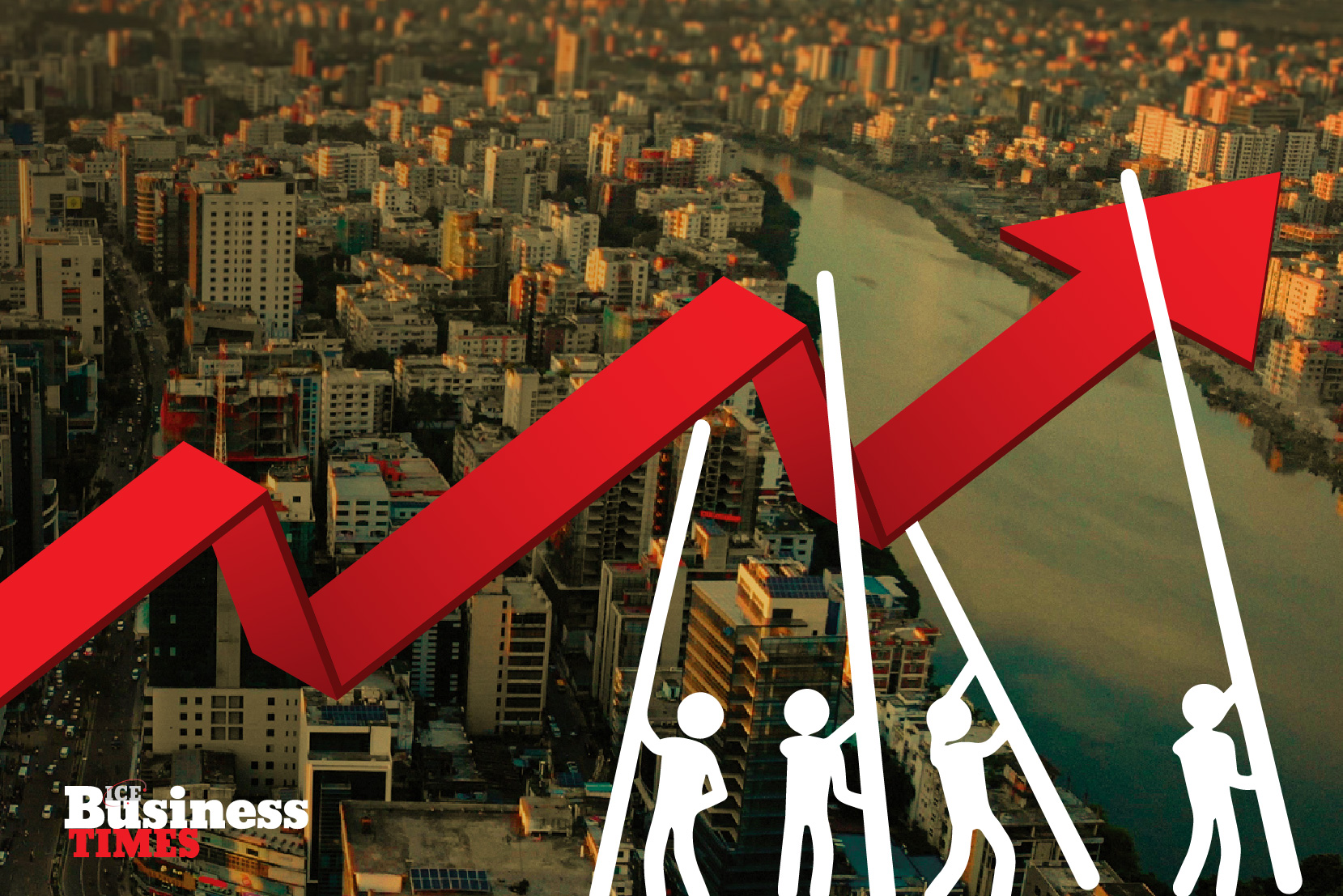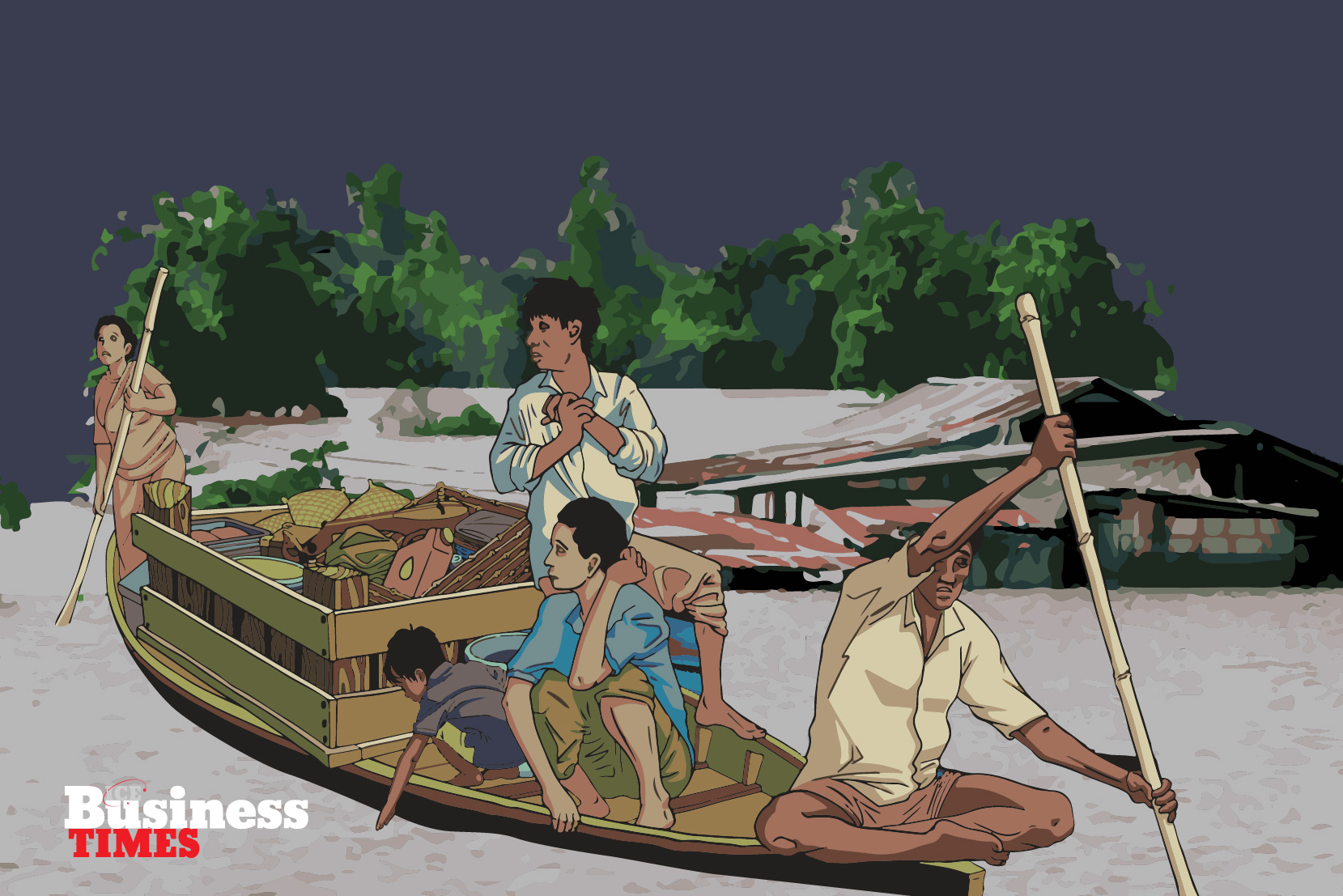DAP (Detailed Area Plan) looks to make Dhaka more liveable by 2035
Dhaka: An ever-bustling, ever-changing city that brims with life, laughter and love. There’s no denying that Dhaka is truly a dynamic city with so much to cherish, be it the amazing street food or the lively streets or the big-hearted people. It is not unsurprising, considering the population of almost 22 million that Dhaka continues to be the world’s most densely populated city with a population density of 23,234 people per square kilometre within a total area of 300 square kilometres. Our city has a massive overpopulation problem which brings about its host of issues, including pollution (Dhaka also holds the crown for the most polluted air in the world), traffic and a crumbling infrastructure. To make things worse, it has been forecasted that the population of Dhaka is likely to exceed 30 million. Many consider Dhaka unlivable due to overpopulation and unplanned urbanisation, but the increasing numbers threaten to push it over the edge. Of course, the most obvious question that comes to mind is what could be done to combat this? There have been several ‘master plans’ over the years to make Dhaka more ‘liveable’ but to no avail.

First came the Dacca Improvement Trust (DIT) Master Plan in 1958 on an area of 820 square kilometres and a plan period of 20 years. Unfortunately, after the independence in 1971, when Dacca was declared the capital of Bangladesh, almost all the earlier assumptions of the plan proved redundant, and the city essentially started to grow spontaneously. There were several attempts to revise the plan, but nothing ever materialised. A second master plan was formulated in 1995: the Dhaka Metropolitan Development Plan (DMDP). It incorporated various urban strategies, policies and development programmers and was adopted for 20 years. It then took the authorities 15 years to publish the Detailed Area Plan (DAP), and so the DMDP expired in 2015 with little to no implementation. It brings us to the DAP 2016-2035, which the ministerial committee has recently finalised after four years following the expiry of the DAP 2010.
The new DAP, implemented by the Rajdhani Unnayan Kartripakkha (RAJUK), aims to promote environmentally responsible land use in Dhaka, Gazipur, and Narayanganj districts along with other initiatives such as eco-friendly housing, smooth transport and more spaces for recreational and social activities. A vital feature of this DAP is its objective to make the population density in different areas proportionate to the civic amenities available and develop planned infrastructures like block housing to accommodate 60 lakh more people by 2035.
One can argue that its targets are quite ambitious – for example, it wishes to maintain population densities of 200 and 250 people per acre in central Dhaka and the Old Dhaka areas, respectively. Alongside it proposes significant reforms in the most populated regions in Dhaka such as Lalbagh, Bangshal, Sabujbagh and Gandaria. These areas have population densities of around 700-800 people per acre, which is the highest in the world. As a result, achieving any goals regarding overpopulation is sure to be a herculean task.
Association of Bangladesh (REHAB) has expressed concerns that this will drive up to flat prices by at least 50%, causing them to go beyond the purchasing power of the buyers – the general public. REHAB also fears that the new rules will affect 269 allied industries of the housing sector.
The DAP is a comprehensive document and contains plans that bravely takes on this complex city’s challenges, but some of its potential flaws must be considered. A significant issue that may arise is the loss of water bodies – according to the Institute of Architects Bangladesh (IAB), the implementation of this DAP will result in the destruction of 70 per cent of the natural water bodies in and around the city. Moreover, architects have warned that the proportion of flood flow zones will be reduced to 17 per cent if executed. Already being a city with an acute water logging problem, this would prove to be disastrous. The only method to solve the problem is to preserve the city’s remaining canals, ponds and water bodies and reclaim those that have already been grabbed.
However, if the DAP is implemented in its current form, it would contribute to even more waterlogging in the city. Its provisions have created many scopes to allow building structures on ‘general waterbodies.’
There also seems to be the notion that reducing the size of buildings will aid in making Dhaka more liveable – the plan seeks to minimise building size by 33-53%. However, The Real Estate and Housing Association of Bangladesh (REHAB) has expressed concerns that this will drive up flat prices by at least 50%, causing them to go beyond the purchasing power of the buyers – the general public. REHAB also fears that the new rules will affect 269 allied industries of the housing sector. Additionally, experts have concurred that reducing the height of buildings will be detrimental. It is crucial to ensure sufficient light and air for each plot, leaving open space for trees and keeping facilities to absorb rainwater in the ground.
There is a range of other points to consider in the new DAP. In the proposed document, only five per cent of the city area has been designated as purely residential, while the remainder will be a mix of residential and commercial spaces. It will have serious, long-lasting harmful effects on the environment as it is most likely to exacerbate the already worsening pollution conditions. In addition, there is no emphasis on any low-cost housing facilities for low-income groups even though an estimated 34% of households live below the poverty line and over 40 lakh people in Dhaka reside in slums.

Nevertheless, with all the components of the DAP reflected on, there are also various promising initiatives – one such being the proposal to build a multifaceted communication system through rail, road and waterway to connect Dhaka with different cities to lessen the pressure on the central part of Dhaka. For example, metro rail, elevated expressways and shipping have been suggested as potential methods of communication between Dhaka and its adjacent cities. The idea behind this is that once contact between these cities is improved, people will have more ease in travelling, which, as a result, will reduce the traffic pressure in central Dhaka. There is also a significant incentive to introduce more public spaces not only for social and recreational activities but also to make Dhaka a more eco-friendly city. The construction of 5 large regional parks, 49 water parks, eight large eco-parks and nine other parks and playgrounds has been put forward. Quality education and healthcare have also been prioritised in the DAP, with plans to construct 627 new schools and 287 new hospitals.
The DAP is complex and elaborate and therefore needs a thorough evaluation by all stakeholders involved to ensure that no Dhaka resident is disadvantaged due to any of the new rules and regulations.
Overall, there are various ideas in the DAP that each has its own set of merits and drawbacks. The DAP is complex and elaborate and therefore needs a thorough evaluation by all stakeholders involved to ensure that no Dhaka resident is disadvantaged due to any of the new rules and regulations. In addition, it is also imperative to make sure that the DAP’s proposed plans don’t aggravate any existing problems that our city has. Most importantly, sincere efforts need to be made by everyone involved to create a more liveable Dhaka for 2035.















